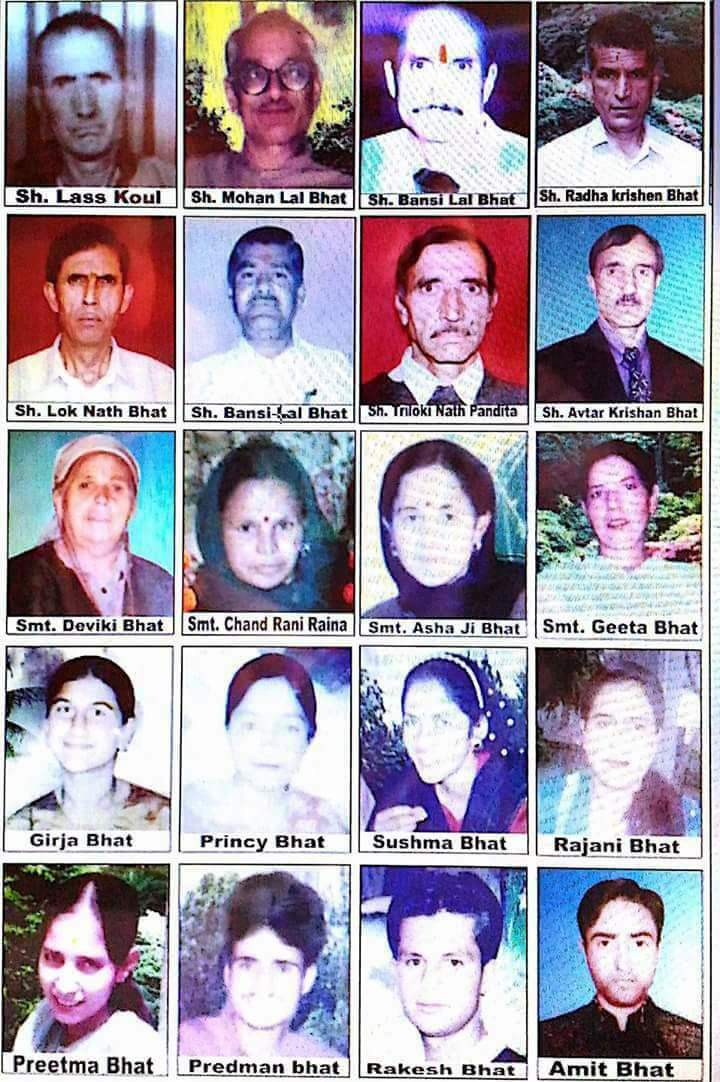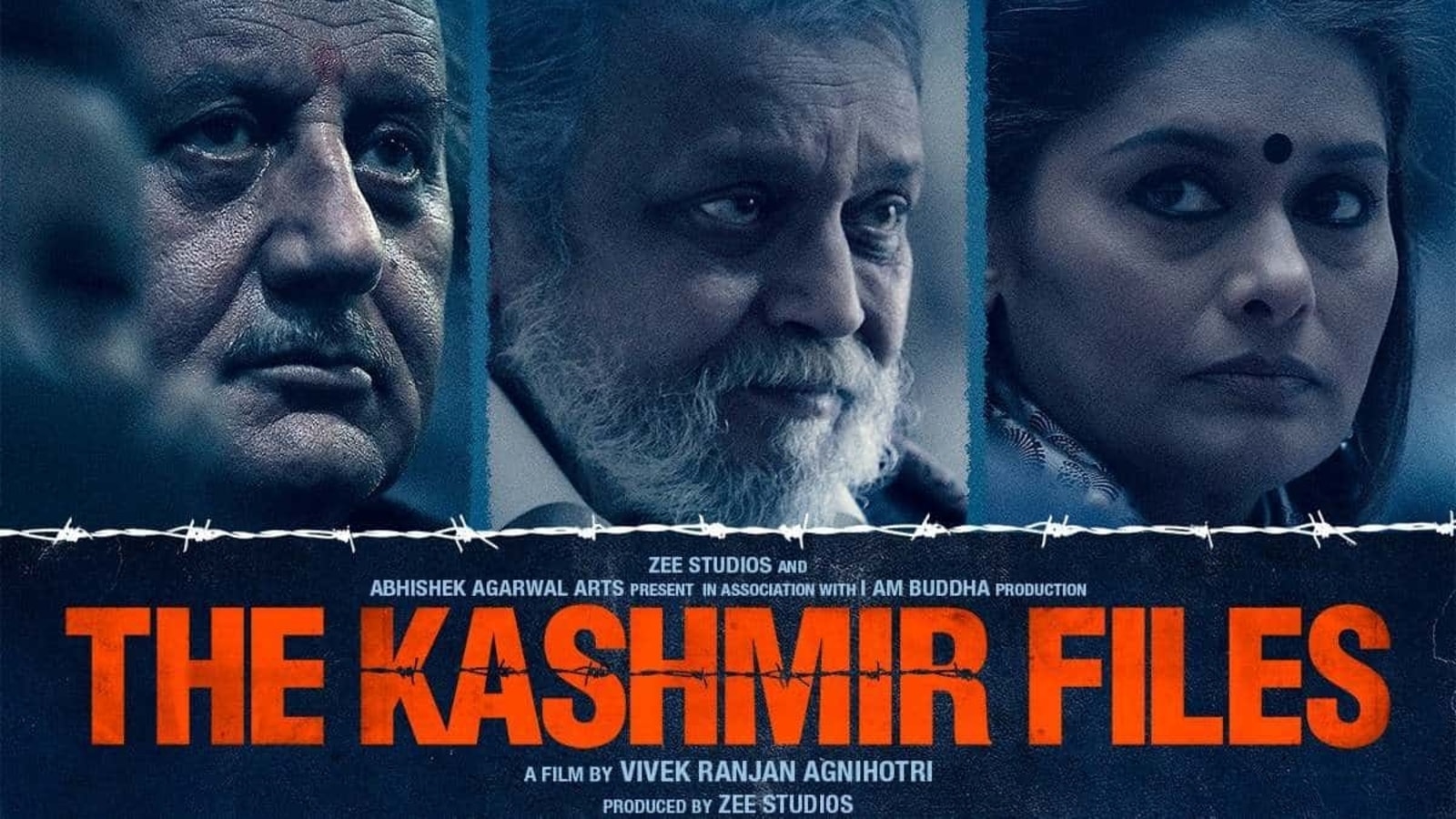A bunch of young boys are joyfully playing cricket, when they are suddenly asked, “Do you know who these houses belong to” — indicating toward some ravaged houses of Wandhama village, near Ganderbal in Jammu and Kashmir. The boy promptly answers, ‘Bhatta’ — which means Kashmiri Pandits.
It becomes clear immediately that the children born here are aware of the horror that took place on January 25, 1998 night, which sent shock waves across the world.
In a short film by Naveen Pandita called Counting the Dead, a few Muslim neighbors of the slain Pandit families tell the horrors of the night in their own words and do not shy away from sharing the agony.
“The Pandits were nice, helpful. They used to invite us to their weddings,” the children continue, “They never fought with each other. Never.”
They later tell the cameraperson, that they know about the Pandits through their parents. The first house is of Jagannath and Niranjan — two brothers who were lucky enough to escape because they had left the village before the tragedy struck. “God saved them,” says the elderly Muslim man in the video.
Next, he points toward another house and talks at length about a man who stayed back with his wife and brother. However, when he tries to recollect his name, he fumbles and smiles nervously. “Now I can’t recollect names. It’s been almost 30 years.”
“Sudarshan”—he suddenly remembers his name, “We called him Sodhe Bhatt.”
Then one by one, he takes us through the houses and narrates the incidents, throwing light on how things unfolded that night.
Then when he shows the house where most of the killings took place, “it’s a hard moment where our hearts get filled with emotions that are hard to spell out. It is the home of Kashinath and Shyamlal. Kashinath was entertaining a few guests from Jammu that night everyone was killed. Little children are like angels,” the man says when he talks about the children who were among those killed. When asked about how many killings took place in the house, he starts counting.
#Flashback: Children play outside the abandoned houses of #Kashmiri migrant #Pandits at #Wandhama in central #Kashmir's #Ganderbal district.#WandhamaMassacre pic.twitter.com/hsepZ6LEwE
— Sheikh Junaid ? (@Sjunaidtweets) January 25, 2022
In the village, as many as 23 of the 24 Pandits were killed on that fateful night.
While many years have passed since that incident, Pandits continue to live in the hope to return to their village one day. Recently, the incident was portrayed in Vivek Agnihotri’s Kashmir Files, starring Anupam Kher, Pallavi Joshi, Mithun Chakraborty among others.
As the witness continues to share his memories from that night in this video, we could sense from the look in his eyes that this was a memory he couldn’t wipe from his mind, no matter how much he wanted to. The people in this village are left with no choice but to live amidst these homes haunted by the dread and poignancy of their past inhabitants.
Naveen Pandita, who created the short film keeps visiting his village every once in a while in the past 10-12 years to keep the memories of his lost home back in the village intact. He never forgets to carry his camera, though. While this short film did manage to capture the essence of the message he was trying to show through these interviews, he says nothing tells the truth more perfectly than the pictures of these haunted homes.

He also admits that not many people are ready to be vocal about the incident, despite being aware of the facts. “Even some of my friends who have gone through this, refuse to talk about it openly,” says Pandita. “My idea is to share the message through my lens. I don’t want anything in return. If the truth reaches the people, who are unaware of this whole episode, I’ve done my job.”
In The Dead Of Night
In the wee hours of the night before India’s Republic Day, in the year 1998, unidentified gunmen barged into the houses of four Kashmiri Pandit families and shot dead 23 of the 24 members in what came to be known as the Wandhama massacre.
Wandhama is a small neighborhood, some 20 km from Srinagar. The gunmen, all dressed in Indian Army uniforms and brandishing Kalashnikov rifles, knocked on the doors of local Pandits’ homes. Unaware of what was about to transpire, the innocent Pandits fell prey to the gunmen’s talk and got coaxed by them, ultimately getting killed.
It was also the night of Shab-e-Qadr—one of the Holiest nights for Muslims, and there were celebrations all around. While there were sounds of prayers all around the village, in some distant corners, the sounds of the loud prayers were overpowered by the noise of gunshots and screams of the victims.

The Last Supper
A ‘Freepress Kashmir’ report narrates that on the night of January 25, 1998, it was supposedly a homecoming exploratory trip of a few migrant Kashmiri Pandits from Jammu. They had been exploring avenues to return to their homeland.
These people had assembled to meet their near and dear ones and for a family reunion, in hopes that their return would be possible and receive welcoming warmth in the neighborhood that they had long abandoned in the 1990s, or rather forced to abandon due to rising militancy in the region. Who would have thought that it would be the last dinner of their lives?
The report continues to state that the Muslims and Pandits lived in utter harmony and the former even “pleaded with the Pandits to stay back” who left the village despite their requests.

According to a previous article by The EurAsian Times, it has been mentioned that between February and March 1990, about 100,000 of the Valley’s total 140,000 Kashmiri Pandit inhabitants migrated. They took this step in response to the threats by the terrorists who constantly demanded that if they wished to stay back, they would have to convert to Islam, flee the valley or be prepared to be killed.
Wandhama Today
“Things have changed today, and many people have started accepting the truth,” says Naveen. However, even if more than two decades have passed since the unforgettable incident, the ghosts of the night still linger in the barren houses of the Pandits, where silence roars louder than the thunders and brings back memories of the screams that deafened the inhabitants of this peaceful neighborhood that unfortunate night.
“While some have started accepting the truth of that night, many continue to avoid the topic and are not ready to accept it,” Naveen adds.
The villagers, which witnessed the horrific incident, recollect the shootout as the worst night of their lives, a night when the amity and harmony between the two communities were ruptured, creating mutual suspicion and distrust.
The Counting the Dead that managed to walk us through the horror-filled corridors of Wandhama showed these houses where the bloodbath took place. These battered and empty houses of the slain Pandits stand tall to speak volumes about the perseverance and courage of those families who refused to leave their village and decided to live with their friendly Muslim neighbors. They also reflect the unspeakable atrocities inflicted upon them by those gunmen that night.
The Aftermath
According to the ‘Freepress Kashmir’ report, the people of the village held the government responsible for the whole incident. However, when former J&K chief minister Farooq Abdullah had the chance, he pinned the blame on Lashkar-e-Taiba militants for the carnage, and an FIR No. 22/1998 under Section 30, 436, 295 RPC [with 7/27 Arms Act] was lodged at Police Station, Ganderbal.
21 years back, 23 #KashmiriPandits were murdered at Wandhama by the #Jihadis.
Their only crime was that they were #Hindus and loved #India.#WandhamaMassacre .@zijoomanish @RavinTrakru @Sunilraina10 @rajtarangini2 @VishalS55897262 @SachinDhar7 pic.twitter.com/mfX9dUpXpy
— संदीप राज कौल-Sandeep Raj Koul (@1Srkl) January 25, 2020
“There is no possibility of Kashmiri Hindus’ honorable return to their homes in Kashmir given the wicked gameplan of Pakistan to create communal clashes,” Abdullah had told the press, as quoted in the article.
Critical Analysis
The treatment of this whole incident has been a disturbing blend of lies, political vendetta, cover-ups, and public apathy. A major chunk of the mainstream media has already discarded the “massacre”, and “forced exodus” as a fantasy created to intensify the communal discord, and the term “genocide” has often been brushed aside.
While the controversies surrounding the incidents will continue to raise eyebrows in the contemporary intellectual community, what we need to understand is whether or not we will look at truth without any bias, and be brave enough to accept it.
“I have high hopes from the younger Kashmiri youth. The Gen-Next. I see a huge potential in them to change the course of Kashmir today. Additionally, we also need to be more open about a past which we cannot change, if we are trying to build a better tomorrow,” Naveen says before signing off.
- The heart-wrenching video can be seen Here
- Written by Pallavi Patra/EurAsian Times Desk
- Follow EurAsian Times on Google News





